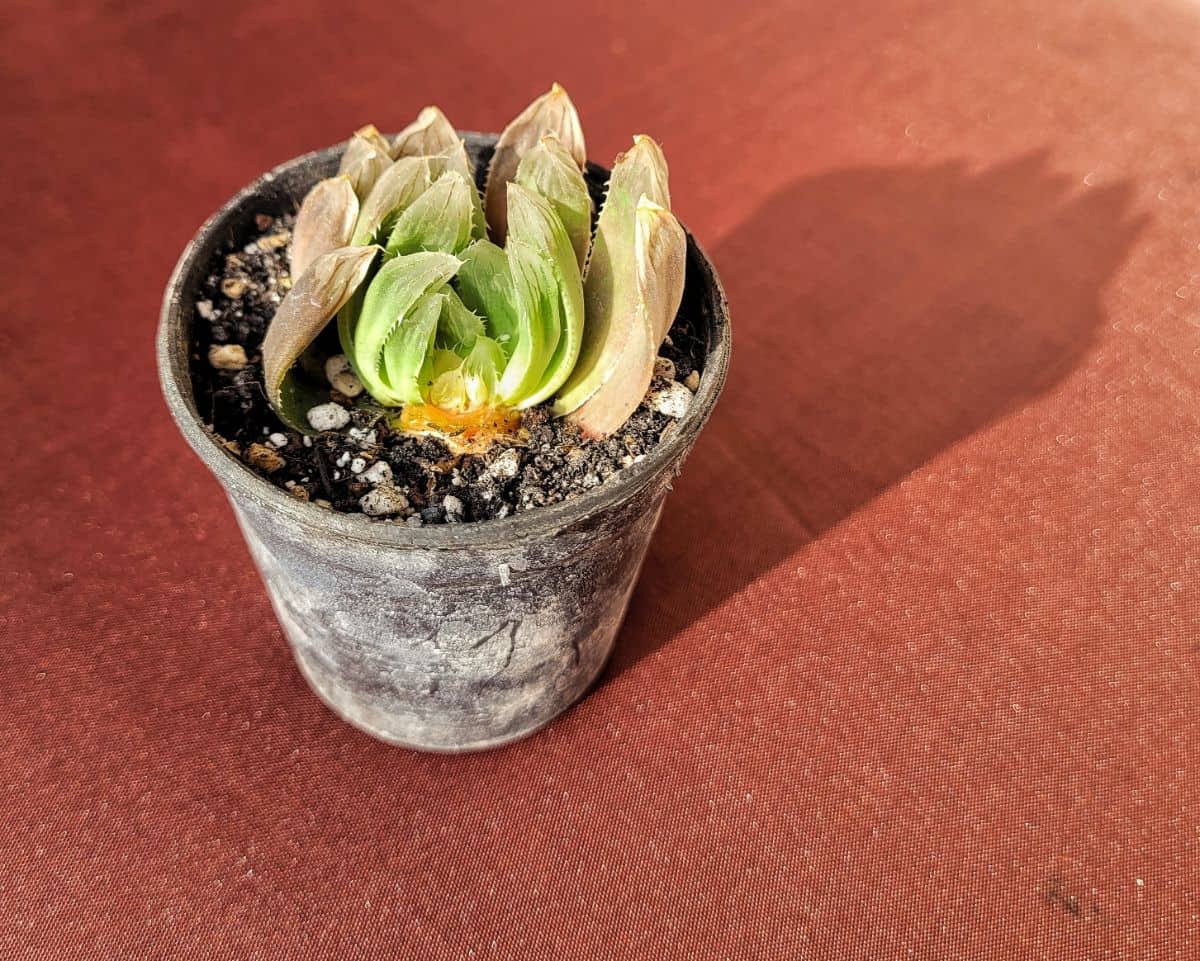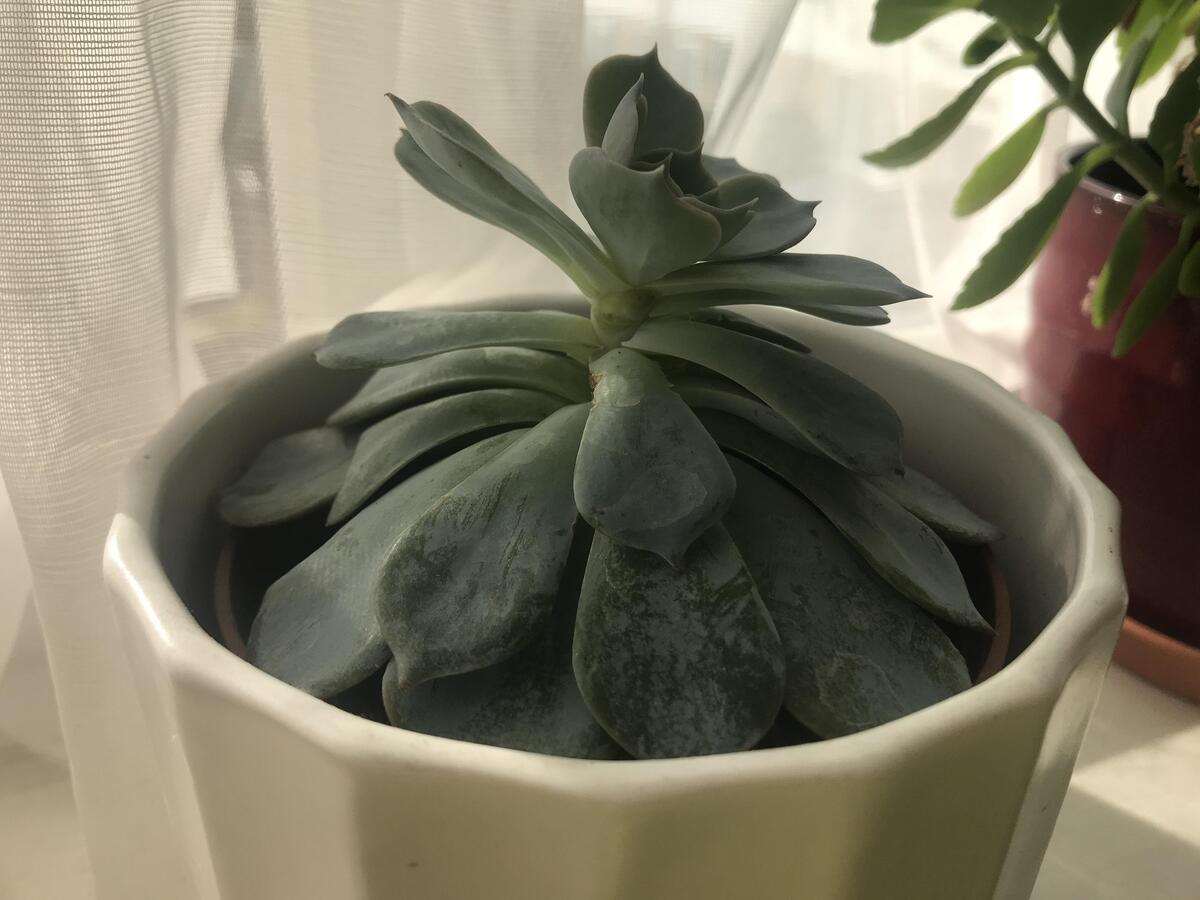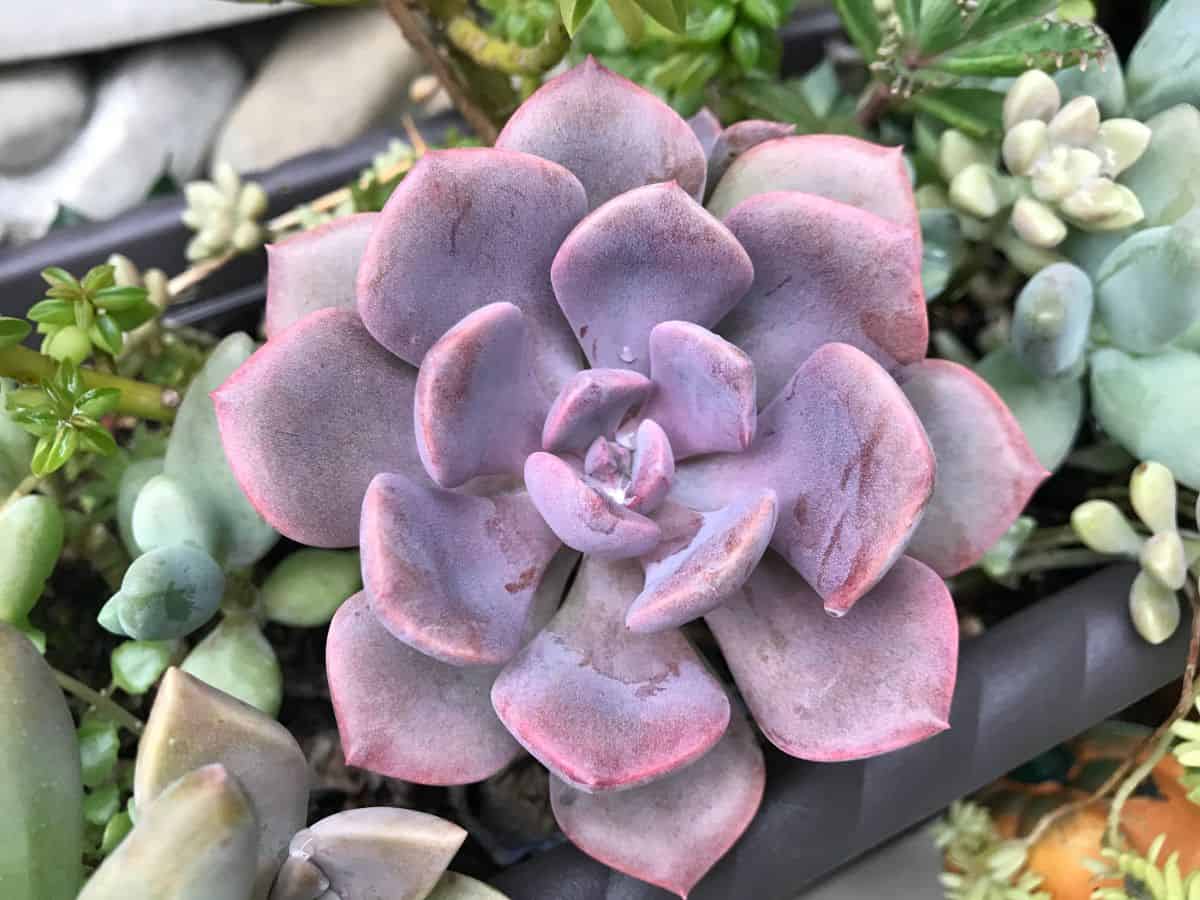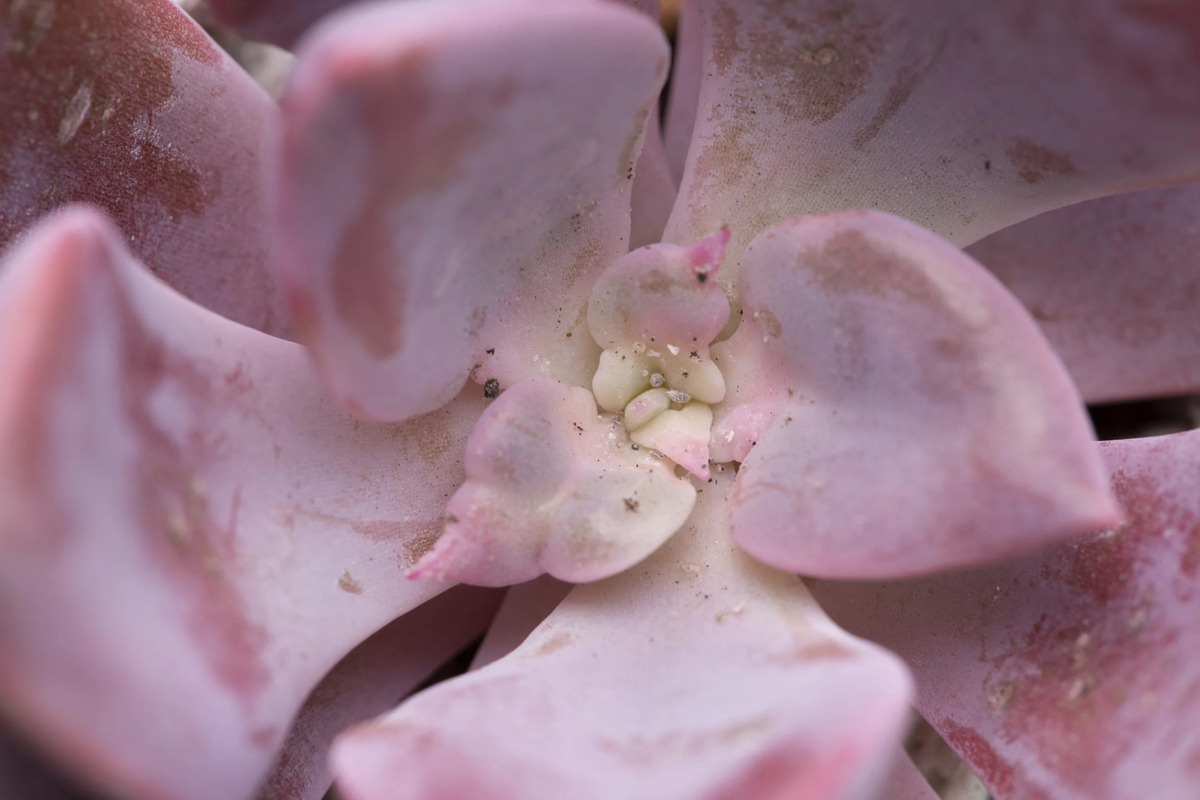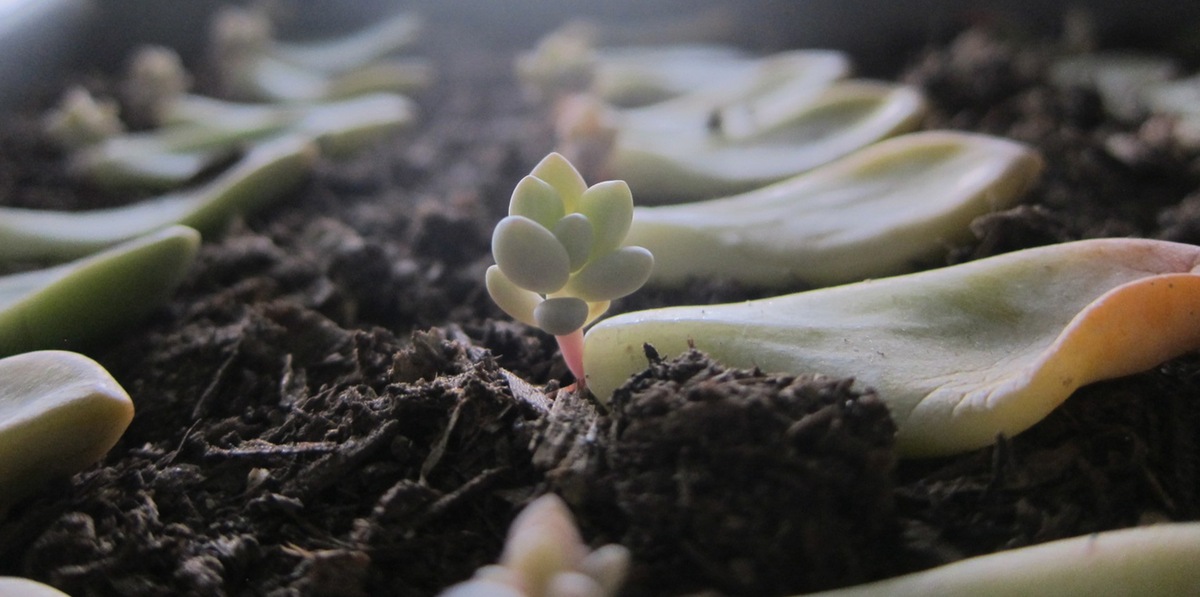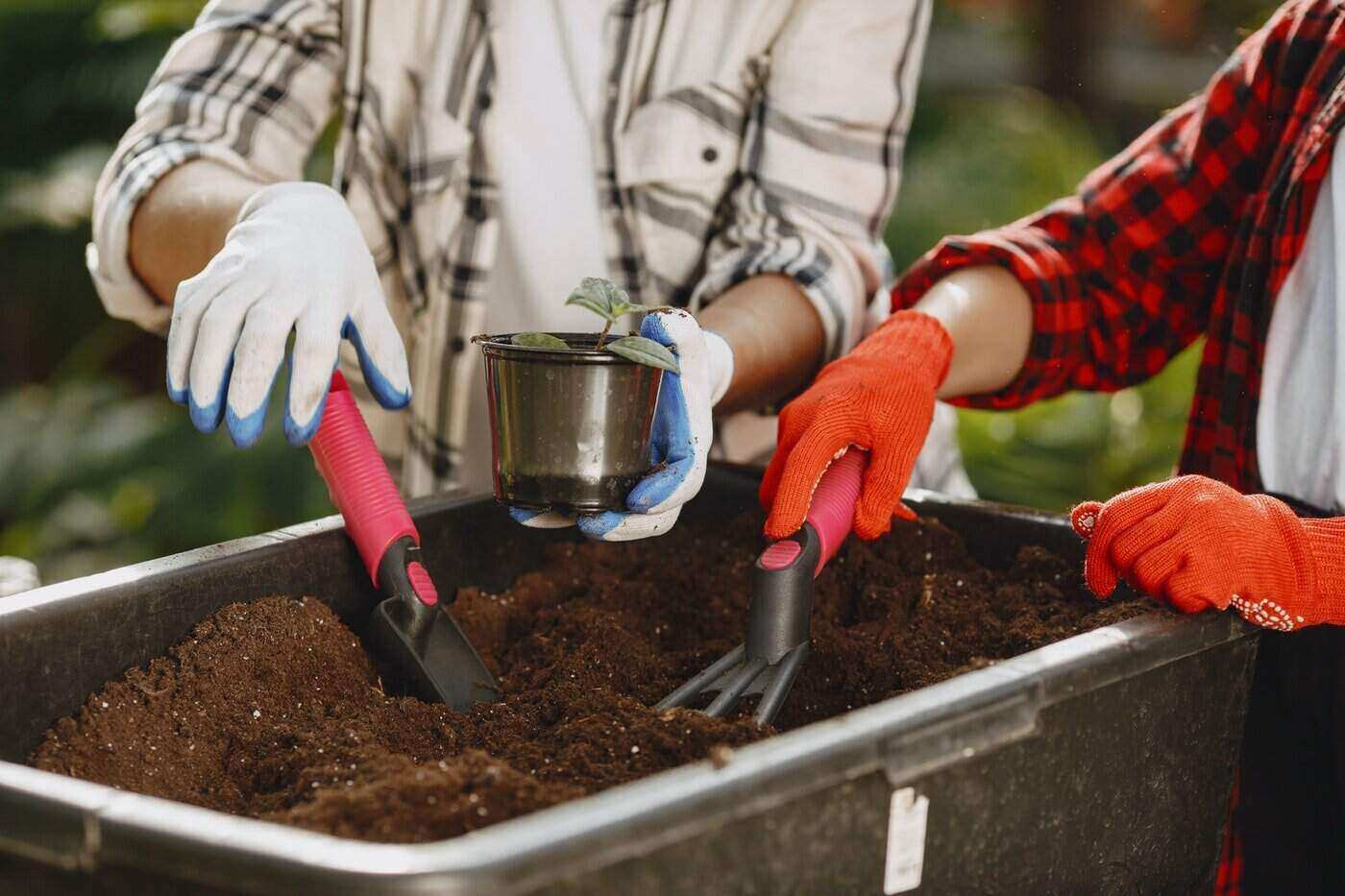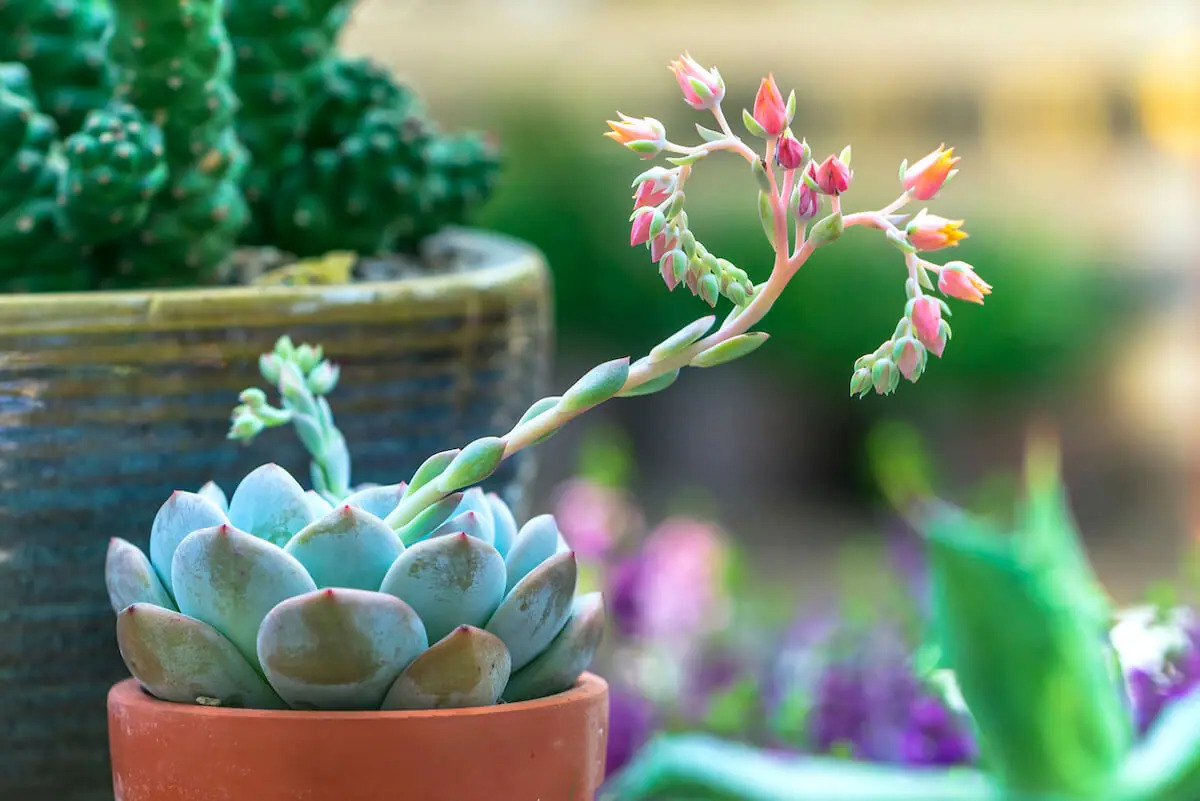Home>Types of Gardening>Ornamental Gardening>Why Do Succulents Rot
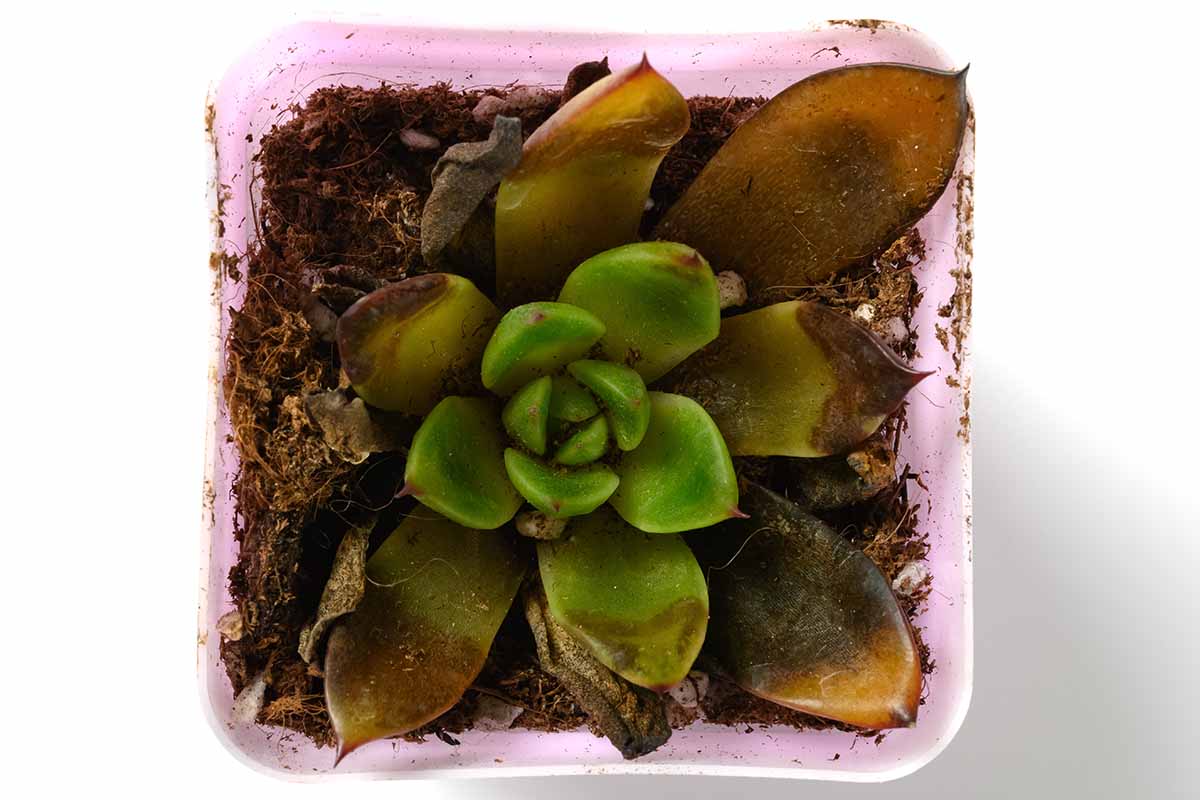

Ornamental Gardening
Why Do Succulents Rot
Modified: February 9, 2024
Discover the reasons behind succulent rot and how to prevent it in your ornamental gardening. Learn valuable tips and techniques from our expert guide.
(Many of the links in this article redirect to a specific reviewed product. Your purchase of these products through affiliate links helps to generate commission for Chicagolandgardening.com, at no extra cost. Learn more)
Table of Contents
- Introduction
- What are succulents?
- Understanding succulent rot
- Causes of succulent rot
- Overwatering
- Poor drainage
- Fungal infections
- Pest infestation
- Signs of succulent rot
- Prevention and treatment of succulent rot
- Proper watering techniques
- Using well-draining soil
- Identifying and treating fungal infections
- Dealing with pest infestation
- Salvaging rotted succulents
- Conclusion
Introduction
Welcome to the world of ornamental gardening, where beauty and nature intertwine to create stunning landscapes. One category of plants that has taken the gardening world by storm is succulents. With their unique shapes, vibrant colors, and low maintenance requirements, succulents have become a popular choice for both indoor and outdoor gardens.
But as with any living organism, succulents are not immune to problems. One of the most distressing issues that can affect these beloved plants is succulent rot. This unsightly and potentially deadly condition occurs when moisture accumulates in the plant’s tissues and causes them to decay.
Understanding the causes and signs of succulent rot is crucial for any gardener looking to preserve the health and beauty of their succulent collection. In this article, we will explore the various factors that contribute to succulent rot and provide tips for prevention and treatment.
Whether you are a seasoned gardener or just starting your journey with succulents, this guide will equip you with the knowledge and tools you need to combat succulent rot and keep your plants thriving.
What are succulents?
Succulents are a fascinating group of plants characterized by their ability to store water in their leaves, stems, or roots. They have evolved this unique adaptation to survive in arid and dry regions where water is scarce. The word “succulent” comes from the Latin word “succulentus,” which means juicy or sap-filled.
One of the defining features of succulents is their thick and fleshy leaves. These leaves have a high water holding capacity, allowing the plant to withstand periods of drought. Some succulents also have specialized structures called water-storing tissues or succulent stems, which act as reservoirs for water storage.
Succulents come in a wide range of shapes, sizes, and colors, making them incredibly diverse and visually striking. Cacti are a well-known group of succulents, but there are numerous other varieties, such as Aloe, Haworthia, Echeveria, and Sedum, to name just a few.
One of the reasons succulents have gained so much popularity is their adaptability and ease of care. They are well-suited for both indoor and outdoor environments, and their low maintenance requirements make them an attractive choice for busy gardeners. Additionally, succulents are known to be hardy plants that can tolerate a wide range of temperatures.
These remarkable plants not only add beauty to any space but also have various practical uses. Some succulents, like Aloe vera, have medicinal properties and are used for their healing gel. Others are used for culinary purposes or in the production of dyes and perfumes. Succulents also play a crucial role in environmental conservation, as they are often used in xeriscaping and green roof projects to reduce water consumption.
Intriguing, resilient, and visually captivating, succulents have captured the hearts of gardeners and plant enthusiasts worldwide. Their distinct features and ability to thrive in challenging conditions make them a wonderful addition to any garden or indoor collection.
Understanding succulent rot
Succulent rot is a common problem that many gardeners face when cultivating these delightful plants. It manifests as a softening and decay of the succulent’s tissues, often accompanied by a foul smell. Succulent rot can be caused by a variety of factors, including overwatering, poor drainage, fungal infections, and pest infestations.
When succulents are exposed to excessive moisture for prolonged periods, their roots and stems become vulnerable to rot. Unlike other plants that rely on regular watering, succulents have evolved to thrive in dry environments and are adapted to survive with minimal water intake. Therefore, proper watering and well-draining soil are essential to prevent succulent rot.
Poor drainage is another common culprit of succulent rot. When the soil does not allow water to escape, it becomes waterlogged, creating a breeding ground for rot-causing fungi and bacteria. Additionally, limited air circulation around the succulent’s roots can lead to oxygen deprivation, further weakening the plant’s defenses against rot.
Fungal infections, such as root rot, can occur when succulents are exposed to excessively humid conditions or when water is left in the crevices between leaves. Fungi thrive in moist environments and can quickly spread throughout the plant, causing significant damage if not addressed promptly. Similarly, pest infestations, such as mealybugs, scale insects, or aphids, can weaken succulents and make them more susceptible to rot.
Recognizing the signs of succulent rot is crucial for early intervention. Unfortunately, the symptoms may vary depending on the severity of the rot and the affected plant parts. Some telltale signs include soft mushy leaves or stems, a darkening or change in color, a foul odor, and the presence of mold or fungal growth.
In the next sections, we will explore the causes of succulent rot in more detail and provide practical tips on how to prevent and treat this unfortunate condition. By gaining a deeper understanding of succulent rot and implementing the appropriate measures, we can ensure the longevity and vitality of our beloved succulents.
Causes of succulent rot
Succulent rot can have various causes, all of which revolve around excess moisture and unfavorable growing conditions for these water-storing plants. Understanding these causes is crucial for preventing and addressing succulent rot effectively. Let’s take a closer look at some of the primary factors that contribute to succulent rot.
- Overwatering: One of the most common causes of succulent rot is overwatering. Succulents have adapted to withstand periods of drought and prefer infrequent but deep watering. When succulents are watered too often or when water is not allowed to drain properly, the excess moisture can accumulate in their tissues, leading to rot.
- Poor drainage: Succulents thrive in well-draining soil that allows excess water to escape quickly. When the soil doesn’t drain effectively, water accumulates around the roots and stems, creating an environment conducive to rot. It is crucial to ensure that the pots or planting beds have drainage holes and to use a fast-draining soil mix specifically designed for succulents.
- Fungal infections: Fungi thrive in damp environments and can quickly infect succulents, leading to rot. Excess moisture, high humidity, or poor air circulation can create the perfect conditions for fungal growth. Common fungal infections that cause succulent rot include root rot, stem rot, and leaf spot diseases. These infections often manifest as discolored, mushy, or decaying plant tissues.
- Pest infestation: Certain pests, such as mealybugs, scale insects, and aphids, can infest succulents and weaken their defenses against rot. These pests feed on the succulent’s tissues, causing damage and creating entry points for fungi and bacteria. Regular inspection and prompt treatment of pest infestations are essential to preventing succulent rot.
It is important to note that succulent rot can occur due to a combination of these factors. For example, overwatering coupled with poor drainage can create a perfect storm for rot to develop. Understanding the specific causes at play in your succulent garden will help you implement the appropriate preventative measures and treatment strategies.
Now that we’ve examined the causes of succulent rot, let’s delve deeper into each factor in the subsequent sections to better understand how to prevent and address this issue effectively.
Overwatering
One of the most common causes of succulent rot is overwatering. While it is tempting to shower these beautiful plants with love and attention, succulents have specific watering needs that differ from other houseplants or garden plants.
Succulents have evolved to adapt to arid and dry environments, where water is scarce. They are designed to store water in their leaves, stems, or roots, enabling them to survive through extended periods of drought. Therefore, overwatering succulents can be detrimental to their health and can lead to rot.
When succulents are watered too frequently or when water is not allowed to drain properly, the excess moisture can accumulate in the plant’s tissues. The stored water, an adaptation meant to sustain the plant during dry periods, becomes detrimental when it sits stagnant for extended periods.
To prevent overwatering, it is important to understand the watering needs of your succulents. Most succulents prefer a “soak and dry” method of watering. This means thoroughly saturating the soil when watering, allowing it to drain completely, and then waiting until the soil is dry before watering again.
When watering succulents, it is crucial to avoid letting water sit in the saucer or the bottom of the pot. Make sure your pots have drainage holes to allow excess water to escape. If you are planting succulents in the ground, make sure the soil is well-draining and slopes away from the plants to avoid water accumulation.
A common mistake when caring for succulents is misting them or providing small amounts of water frequently. Succulents do not benefit from frequent light watering. Instead, they prefer a deep watering that allows the water to penetrate the root zone and then allows the soil to dry out completely before watering again.
It is important to note that the frequency of watering will vary depending on various factors, such as the type of succulent, the climate, and the season. During the active growing season, succulents may require more frequent watering, while they may go into a dormant period during colder months and require less water.
By understanding the watering needs of your succulents and practicing proper watering techniques, you can prevent overwatering and reduce the risk of succulent rot. Remember, succulents are accustomed to surviving in dry conditions, so a little neglect when it comes to watering is often better than excessive care.
Poor drainage
Poor drainage is another common cause of succulent rot. Succulents thrive in well-draining soil that allows excess water to escape quickly. When the soil does not drain effectively, water accumulates around the roots and stems, creating an environment conducive to rot.
Succulents are adapted to survive in arid conditions, where water is scarce. Their roots are designed to absorb water quickly and efficiently when it is available, but they are not meant to sit in soggy soil for extended periods. Excessive moisture around the roots can lead to oxygen deprivation and root rot.
To ensure proper drainage for your succulents, it is essential to use a well-draining soil mix specifically formulated for succulents. These mixes typically include ingredients such as perlite, pumice, or coarse sand, which help to create air pockets and allow water to flow through more easily.
Avoid using regular potting soil or garden soil, as they tend to retain moisture for too long, increasing the risk of succulent rot. These soil types can become compacted and restrict airflow, further exacerbating the drainage issue.
In addition to using the right soil mix, choosing the right pots or planting beds is crucial for ensuring proper drainage. Select containers with drainage holes to allow excess water to escape freely. If you are using decorative pots without drainage, consider using nursery pots with drainage holes and placing them inside the decorative containers. This will allow you to water your succulents thoroughly without causing water to collect at the bottom.
When planting succulents in the ground, it is important to amend the soil with organic matter, such as compost, to improve its drainage capabilities. Additionally, ensuring that the soil slopes away from the plants will prevent water from pooling around the roots.
Regularly inspect your succulents and their soil for any signs of poor drainage, such as waterlogged soil or root rot. If you notice compacted soil or too much moisture, modify the watering schedule or consider repotting the succulent in a well-draining mix.
Remember, succulents thrive in environments where water flows freely through the soil, allowing their roots to absorb water and then dry out. By prioritizing proper drainage, you can create a conducive growing environment for your succulents and reduce the risk of succulent rot.
Fungal infections
Fungal infections are a common cause of succulent rot and can occur when succulents are exposed to excessively humid conditions or when water is left in the crevices between leaves. Fungi thrive in moist environments and can quickly spread throughout the plant, causing significant damage if not addressed promptly.
One of the most common fungal infections that affect succulents is root rot. This occurs when the roots remain in soggy, waterlogged soil for an extended period, providing an ideal environment for fungi to thrive. As the fungi attack the roots, they disrupt the plant’s ability to absorb water and nutrients, leading to wilting, discoloration, and decay of the plant.
Fungal infections can also affect other parts of the succulent, such as the stems and leaves. Stem rot, for example, can cause the stems to become mushy and soft, with a darkened or discolored appearance. Leaf spot diseases are characterized by the presence of brown, black, or yellow spots on the leaves, often surrounded by a dark ring.
To prevent fungal infections, it is important to provide adequate airflow around your succulents. Good air circulation helps to minimize excess moisture and creates an unfavorable environment for fungal growth. Avoid overcrowding your succulents, especially in high-humidity areas, and provide enough space between plants for air to circulate freely.
When watering your succulents, take care to keep water off the leaves and avoid letting water collect in the crevices between the leaves. Standing water provides a breeding ground for fungi. Instead, water the soil directly at the base of the plant, allowing it to be absorbed by the roots without wetting the foliage.
If you notice signs of fungal infection, such as soft and decaying plant tissues or the presence of mold or fungal growth, it is crucial to take immediate action. Remove any affected parts of the plant using clean, sterile tools, and dispose of them properly to prevent the spread of the fungus. Apply a fungicide specifically formulated for succulents to help control the fungal infection.
Preventing fungal infections in succulents requires a proactive approach to create conditions that are unfavorable for fungal growth. By providing good airflow, avoiding excessive moisture, and taking prompt action at the first sign of infection, you can protect your succulents and minimize the risk of succulent rot caused by fungi.
Pest infestation
Pest infestation is another factor that can weaken succulents and make them more susceptible to rot. Common pests that affect succulents include mealybugs, scale insects, aphids, and spider mites. These tiny creatures can cause damage by feeding on the succulent’s tissues, creating entry points for bacteria and fungi to invade.
Mealybugs are one of the most notorious pests that target succulents. They are small, white insects that resemble tiny balls of cotton. Mealybugs feed on the plant’s sap, causing wilting, leaf discoloration, and in severe cases, plant deformity. They also secrete a sticky substance called honeydew, which can attract ants and promote the growth of black sooty mold.
Scale insects are another common pest infestation in succulents. These pests attach themselves to the plant’s stems or leaves and form a protective covering, making them difficult to detect. Scale insects feed on the succulent’s sap, causing yellowing, stunted growth, and leaf drop. They can also leave behind a sticky residue that attracts ants and promotes fungal growth.
Aphids are small, soft-bodied insects that can quickly reproduce and infest succulents. They feed on the sap of the plant, causing stunted growth, curling leaves, and distortion of plant tissues. Aphids can also transmit plant diseases, further weakening the succulent’s defenses.
Spider mites are microscopic pests that thrive in warm and dry conditions. They are known for their webbing, which can be seen on the affected parts of the succulent. Spider mites feed on the plant’s cells, causing discoloration, webbing, and eventually, leaf drop. Like other pests, spider mites can weaken the succulent and make it more prone to rot.
To prevent pest infestation, it is crucial to regularly inspect your succulents for any signs of pests. Look for the insects themselves, as well as any visible damage to the leaves, stems, or roots. If you detect the presence of pests, take appropriate measures to control and eliminate them.
One effective method of controlling pests is to physically remove them by wiping the affected areas with a cotton swab soaked in alcohol or by using a strong stream of water to dislodge them. For severe infestations, consider using organic insecticidal soaps or neem oil, following the instructions on the product label.
Preventing pest infestation in the first place is essential. Avoid overfertilizing your succulents, as this can attract pests. Keep your succulents in optimal health by providing adequate light, proper watering, and regular cleaning to remove any debris or fallen leaves that can harbor pests.
By being proactive in monitoring for pests, maintaining a healthy growing environment, and taking appropriate action when necessary, you can protect your succulents from infestation and reduce the risk of succulent rot caused by pest-related damage.
Signs of succulent rot
Recognizing the signs of succulent rot is crucial for early intervention and preventing further damage to your plants. Succulent rot can present itself in various ways, depending on the severity of the rot and the affected plant parts. Look out for the following signs of succulent rot:
- Soft and mushy texture: As succulent rot progresses, affected areas of the plant become soft and mushy to the touch. Healthy succulents have firm leaves and stems, so any noticeable softness or squishiness is a red flag.
- Darkened or discolored tissues: Succulent rot often causes the affected areas to darken or change color. You may notice brown spots, blackened sections, or a general discoloration of the leaves, stems, or roots.
- Foul odor: When succulent rot sets in, it can lead to a foul smell emanating from the decaying tissues. The odor is often distinctive and unpleasant, serving as an indicator that rot is present.
- Mold or fungal growth: Succulent rot creates a favorable environment for mold or fungal growth. Look for the presence of fuzzy or powdery mold on the plant’s surface, especially in areas where moisture tends to accumulate, such as between leaves or at the base of the plant.
- Wilting or drooping: As rot progresses, the affected parts of the succulent may start to wilt or droop. This is a result of the decayed tissues losing their structural integrity and the plant’s inability to properly absorb water and nutrients.
It is important to note that the signs of succulent rot may vary depending on the severity of the condition and the specific plant species affected. Some rotting succulents may exhibit all of the above signs, while others may only display a few.
Regularly inspecting your succulents for any signs of rot or decay is essential to catch the issue early and prevent further spread. Pay attention to any changes in texture, color, smell, or growth pattern. Taking prompt action at the first sign of succulent rot can increase the chances of salvaging the plant and restoring its health.
In the next sections, we will explore prevention and treatment methods for succulent rot, helping you keep your succulents healthy and thriving.
Prevention and treatment of succulent rot
Preventing and treating succulent rot requires a combination of proactive measures and timely intervention. By implementing the following techniques, you can help maintain the health and vitality of your succulents:
Proper watering techniques:
One of the most effective ways to prevent succulent rot is to practice proper watering techniques. Allow the soil to dry out completely between waterings, and water the plant deeply but infrequently. Avoid overwatering and ensure that excess water can drain freely from the pot or planting bed.
Using well-draining soil:
Succulents thrive in well-draining soil that allows excess water to escape quickly. Use a specialized succulent or cactus potting mix that contains materials such as perlite, pumice, or coarse sand. These ingredients create air pockets in the soil, promoting proper drainage.
Identifying and treating fungal infections:
If you notice signs of fungal infection, such as soft and decaying plant tissues or mold growth, take immediate action. Remove the affected parts of the plant with clean, sterile tools, and dispose of them properly. Apply a fungicide specifically formulated for succulents to help control the infection.
Dealing with pest infestation:
Regularly inspect your succulents for signs of pest infestation, such as the presence of insects, sticky residue, or plant damage. If pests are detected, physically remove them using alcohol-soaked cotton swabs or a strong stream of water. If the infestation is severe, consider using organic insecticidal soaps or neem oil to control the pests.
Salvaging rotted succulents:
If you discover succulents that have already succumbed to rot, all hope is not lost. You can attempt to salvage them by cutting away the healthy, unaffected parts and allowing them to callus over for a few days. Once calloused, replant the salvageable parts in fresh, well-draining soil. Water sparingly and monitor their progress closely.
Remember, prevention is always better than cure when it comes to succulent rot. Creating a suitable growing environment for your succulents, practicing proper watering techniques, and promptly addressing any signs of rot or pest infestation are key to preventing the development and spread of succulent rot.
By following these preventative measures and taking swift action when necessary, you can enjoy healthy, vibrant succulents that will bring beauty and joy to your garden or indoor space.
Proper watering techniques
Proper watering techniques are essential for maintaining the health and preventing succulent rot. Succulents have unique water requirements due to their ability to store water in their leaves, stems, or roots. By following these guidelines, you can ensure that your succulents receive the right amount of water and reduce the risk of rot:
1. Water infrequently but deeply:
Succulents are adapted to survive in arid environments, so they prefer infrequent but deep watering. Instead of shallow watering, ensure that the water reaches the root zone by thoroughly saturating the soil during each watering session. Allow the soil to dry out completely before watering again.
2. Adjust watering frequency based on the season and environment:
Succulents have different watering needs depending on the season and environmental conditions. During the active growing season, such as spring and summer, they may require more frequent watering. In contrast, succulents may enter a dormant period during colder months and require less water. Observe your succulents closely and adjust the watering frequency accordingly.
3. Water the soil, not the foliage:
When watering your succulents, aim to water the soil directly at the base of the plant, avoiding wetting the foliage as much as possible. Wetting the leaves can increase the risk of fungal infection and rot. Use a watering can or a narrow spout watering tool to precisely water the soil without splashing water onto the leaves.
4. Use the “soak and dry” method:
The “soak and dry” method is a recommended watering technique for succulents. Thoroughly saturate the soil until water drains out from the bottom of the pot or planting bed. Allow the soil to dry out completely before watering again. This method mimics the natural rainfall pattern in arid regions and promotes healthy root growth.
5. Avoid waterlogging and standing water:
Excess water can lead to rot and other issues in succulents. Ensure that your containers have drainage holes to allow excess water to escape freely. If planting succulents in the ground, amend the soil with organic matter to improve drainage and slope the soil away from the plants to prevent water from pooling around the roots.
By following these proper watering techniques, you can provide your succulents with the right amount of water while avoiding the risk of succulent rot. Remember, it is better to err on the side of underwatering than overwatering, as succulents are adapted to withstand dry conditions.
Using well-draining soil
Choosing the right soil is crucial for the health and well-being of your succulents, as they thrive in well-draining conditions. Succulents have evolved to grow in arid and dry environments, where water drains quickly and does not linger around their roots. By using well-draining soil, you can create an optimal growing environment and reduce the risk of succulent rot.
When selecting soil for your succulents, it is important to choose a mix that allows water to flow through easily and prevents water from pooling around the roots. There are several options available, such as commercial succulent or cactus potting mixes or creating your own mix using the following ingredients:
1. Perlite:
Perlite is a volcanic mineral that has excellent drainage properties. It is lightweight and helps to create air pockets in the soil, improving aeration and preventing water from sitting in the pot or planting bed. Perlite also aids in preventing soil compaction.
2. Pumice:
Pumice is another volcanic material that has similar properties to perlite. It is porous and lightweight, enabling it to promote proper drainage and prevent waterlogging. Pumice also provides good aeration to the roots and prevents the soil from becoming compacted over time.
3. Coarse sand:
Coarse sand with large particles can also be added to your succulent soil mix to improve drainage. However, be cautious not to use fine or compacted sand, as it can have the opposite effect and hinder drainage. The goal is to provide enough space between the particles for water to flow through.
4. Organic matter:
Incorporating organic matter, such as compost or well-rotted manure, into the soil mix can enhance its water-holding capacity while still maintaining good drainage. The organic matter helps retain some moisture for the succulents’ roots without causing the soil to become waterlogged.
When planting your succulents, fill the pots or planting beds with the well-draining soil mix, ensuring that the soil is loose and crumbly. This allows for proper root development and prevents compaction. Additionally, ensure that the soil is level or slightly mounded around the base of the plant to prevent water from pooling.
Remember, using well-draining soil is crucial for succulent health and helps prevent succulent rot. The soil mix should allow water to pass through quickly, enabling the roots to absorb moisture while avoiding the risk of waterlogged conditions. By providing your succulents with this ideal growing medium, you can create an environment that promotes healthy root growth and reduces the chances of succulent rot.
Identifying and treating fungal infections
Fungal infections can pose a significant threat to the health and survival of your succulents. These infections often occur when succulents are exposed to excessively humid conditions or when water is left in the crevices between leaves. To prevent further damage and preserve the health of your plants, it is important to promptly identify and treat fungal infections in succulents.
Early detection of fungal infections is crucial for effective treatment. Here are some signs to look for:
Soft and decaying plant tissues:
Fungal infections in succulents can cause affected areas to become soft, mushy, and prone to rotting. These areas may feel noticeably different from the healthy plant tissue and can often appear discolored or darker than the rest of the plant.
Mold or fungal growth:
Fungal infections in succulents can lead to the development of mold or fungal growth on the plant’s surface. This can manifest as fuzzy or powdery substances, often in areas where moisture tends to accumulate, such as the base of the plant or between leaves. Pay attention to any signs of unusual growth or discoloration.
Yellowing or wilting leaves:
Fungal infections can cause leaves to yellow, wilt, or droop. This can occur as the fungi attack and damage the plant’s tissues, disrupting its ability to absorb nutrients and water. These symptoms may be accompanied by overall plant decline and a loss of vigor.
If you notice any of these signs, take immediate action to treat the fungal infection. Here are some steps you can take to address fungal infections in succulents:
1. Remove affected parts:
Use clean, sterile tools to carefully remove any affected or rotting plant parts. Cut away the damaged areas, ensuring that you make clean cuts above healthy tissue. Dispose of the removed plant material properly to prevent the spread of the infection.
2. Apply a fungicide:
Using a fungicide specifically formulated for succulents can help control the fungal infection. Follow the instructions on the product carefully, as different fungicides may have specific application methods and frequency of use. Be sure to cover all affected areas, including the surrounding healthy tissue to prevent the spread of the fungus.
3. Adjust growing conditions:
To deter the growth and spread of fungi, make environmental changes to reduce humidity and increase airflow around the succulents. Avoid overwatering, ensure proper drainage in the soil, and provide ample space between plants to allow for air circulation. Consider using a fan or increasing ventilation in indoor environments.
4. Monitor and observe:
After treatment, closely monitor your succulents for any signs of reoccurrence or spreading of the fungal infection. Catching any new infections early will enable you to take immediate action to prevent further damage.
Remember, prevention is key in addressing fungal infections. Creating conditions that are unfavorable for fungal growth, such as proper watering practices and well-draining soil, can help prevent future infections. Regularly inspect your succulents, be proactive in maintaining their health, and take prompt action when signs of fungal infection arise to protect and preserve your beloved plants.
Dealing with pest infestation
Pest infestations can be a frustrating challenge for succulent growers, but with proper management, you can effectively address and prevent these unwanted guests. Common pests that can infest succulents include mealybugs, scale insects, aphids, and spider mites. Here are some steps you can take to deal with pest infestations:
1. Early detection and inspection:
Regularly inspect your succulents for any signs of pests. Look for the insects themselves, as well as any visible damage to the leaves, stems, or roots. Pay attention to sticky residue, distorted growth, wilting, or small webs. Early detection allows for prompt intervention and minimizes the potential damage caused by the pests.
2. Physical removal:
If you spot pests on your succulents, you can physically remove them. Use a cotton swab dipped in rubbing alcohol to wipe off the pests from the affected areas. You can also use a strong stream of water to dislodge the pests. Remember to remove any fallen leaves or debris around the plants, as these can serve as hiding places for pests.
3. Organic pest control methods:
For smaller infestations, organic pest control methods can be effective. Consider using insecticidal soaps or neem oil, which are natural and safe options for controlling pests. These products work by suffocating and disrupting the pests’ life cycle. Follow the instructions on the product label carefully and reapply as needed.
4. Biological control:
Introducing beneficial insects or predators can help control pest populations. Ladybugs, lacewings, and predatory mites are examples of natural enemies that feed on pests like aphids and spider mites. You can purchase these beneficial insects or create an environment that attracts them, such as planting companion plants or maintaining a diverse and balanced ecosystem in your garden.
5. Cultural practices:
Implement cultural practices that promote plant health and reduce pest susceptibility. Provide adequate sunlight and airflow, as pests often thrive in shaded and still environments. Avoid overfertilizing your succulents, as excessive nitrogen can attract pests. Additionally, regularly inspect your other houseplants and isolate any infested plants to prevent the spread of pests to your succulents.
6. Persistent management:
Dealing with pest infestation requires persistence. Keep monitoring your succulents and be vigilant for any signs of reinfestation or new pests. If necessary, repeat the treatments or change your pest control strategy. Remember that an integrated approach, combining multiple methods, is usually the most effective in managing pests.
By implementing these strategies and staying proactive, you can manage and reduce pest infestations effectively. Proper pest control supports the overall health and well-being of your succulents, ensuring they continue to thrive and bring beauty to your indoor or outdoor spaces.
Salvaging rotted succulents
Discovering that your beloved succulent has succumbed to rot can be disheartening, but in some cases, there is hope for salvaging the plant. By taking immediate action and following these steps, you may be able to save your rotted succulent:
1. Assess the damage:
Examine the rotted succulent and identify any healthy, unaffected parts. Look for firm and undecayed stems or leaves that show no signs of softness or discoloration. These healthy sections will be vital for the salvaging process.
2. Trim away the rot:
Using clean, sterile gardening shears, carefully trim away the rotted parts of the succulent. Cut back to healthy tissue, ensuring that there are no signs of decay or softness. Make clean cuts, as jagged or torn edges can create further stress for the plant.
3. Allow the cuttings to callus:
After trimming, set aside the cuttings in a cool, dry location. Let them sit for a few days to allow the cut ends to callus over. This step is essential as it creates a protective layer that helps prevent infection and aids in rooting.
4. Prepare fresh, well-draining soil:
In the meantime, prepare fresh soil for replanting. Use a well-draining soil mix specifically formulated for succulents, or create your own mix by combining coarse sand, perlite, and regular potting soil. The goal is to provide a growing medium that promotes quick drainage and aeration.
5. Plant the salvaged cuttings:
Once the cut ends of the succulent cuttings have calloused, gently plant them in the prepared soil. Ensure that the cuttings make contact with the soil to encourage root development. Place them in a location with bright, indirect sunlight to prevent sunburn and facilitate the healing process.
6. Water sparingly and monitor closely:
Water the newly planted cuttings sparingly. Succulents recovering from rot have weakened root systems and are more susceptible to overwatering. Mist the soil lightly or use a small amount of water to moisten the soil around the cuttings, allowing it to dry out between waterings. Regularly monitor the cuttings for any signs of new growth or rot.
It is important to note that not all rotted succulents can be salvaged. The success of the salvaging process depends on the extent of the rot and the health of the remaining plant parts. Some succulents may be too far gone to recover, even with the best efforts. However, with timely intervention and proper care, you may still be able to revive many rotted succulents and give them a chance at thriving once again.
Remember to remain patient and give your salvaged succulents time to recover. As the new growth emerges and establishes roots, you will see signs of successful recovery. Nurture them with proper care, ensuring adequate sunlight, well-draining soil, and cautious watering. With a little TLC, your salvaged succulents may flourish and bring joy back to your garden or indoor space.
Conclusion
Ornamental gardening with succulents can be a rewarding and enjoyable experience, but succulent rot can pose a significant threat to the health and beauty of these unique plants. Understanding the causes, signs, and prevention methods of succulent rot is vital for maintaining thriving succulent collections.
Overwatering and poor drainage are often the primary culprits of succulent rot. By practicing proper watering techniques, allowing the soil to dry out between waterings, and using well-draining soil, we can create an environment that minimizes the risk of rot.
Fungal infections and pest infestations also contribute to succulent rot. Identifying the signs of these issues and promptly treating them with appropriate measures, such as removing affected parts, applying fungicides, or using organic pest control methods, can help save our succulents from further deterioration.
When faced with rotting succulents, salvaging healthy cuttings is possible with careful trimming, allowing the cut ends to callus, and replanting in fresh well-draining soil. By providing the necessary care and closely monitoring the salvaged cuttings, we may witness successful recovery and growth.
In conclusion, ornamental gardening with succulents requires knowledge and attention to detail to ensure their long-term health and vitality. By implementing proper watering practices, maintaining good drainage, monitoring for signs of fungal infections or pests, and taking swift action when necessary, we can protect our succulents and enjoy their beauty for years to come. With a little care and dedication, we can cultivate thriving succulent gardens that bring joy and captivate the eye.
